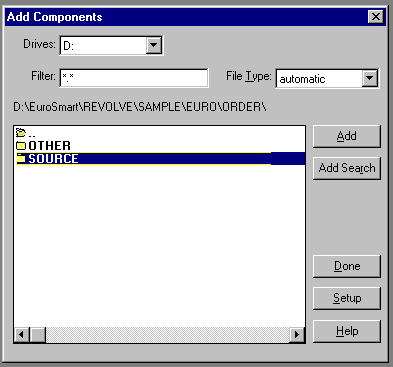| Start Here for the Tutorials | Finding Sets of Monetary Points of Interest |
This chapter contains the first in a set of five tutorials, which together give a tour of EuroSmart. This tutorial shows how to create a project and load the source files into a project database.
Before starting the analysis, you need to carry out an inventory of all the COBOL source, copyfiles, BMS files, JCL files and so on that comprise the application.
In this first tutorial, you create a project for the sample Order application and load its source files into a project database. You then check the loaded project and investigate a problem that occurred.
This tutorial takes about 20 minutes.
This section explains how to restart the tutorials if you have already followed some of them. If you haven't followed any of them at all, you can go straight to the next section.
If you want to restart the tutorials, you need to delete the project files that you created:
A central component of EuroSmart is a project database containing a complete representation of an application's source code. The database represents not only the content of your application but also its structure. The first step is to create a project for your application and load its source files into the database.
This section shows how to create a project Order.prj containing the demonstration source files, and how to load these files into the database.
If you are running EuroSmart on a network, create a local directory for your own copy of the project, to prevent sharing conflicts with other users, for example, c:\Projects\Order.
Select all the source files for the Order application, by clicking the subdirectory source.

Figure 5-1: Add Components
Click OK in response to message saying that the project is up to date.
The new project is now created and loaded into the project database.
When you create a project and load the source files, the files are parsed and checked for inconsistencies, missing files, misnamed components and so on. For example, you might uncover references to other program source files and copy books, or file definitions, screen layouts, job control and so on. You need to check for missing files and add them if appropriate, so that the project database is complete and up to date.
This section shows how to check any potential problems that were discovered when loading the sample programs into the project database.
Note that the terms copybooks, copybook files and copyfiles are synonymous.
This section shows how to review the completeness and coherence of the project and look for missing modules or misnamed files.
The missing copybook file Accdis.cpy is listed together with the explanation that it is not used. We can ignore this for the purpose of this tutorial.
You can close EuroSmart, if you want to stop for now, by clicking Exit
on the Project menu, or clicking ![]() at the top right of the EuroSmart window
at the top right of the EuroSmart window
The project that you have created and loaded into the project database is automatically saved.
You can continue with the next tutorial later, by simply reopening the project.
| Start Here for the Tutorials | Finding Sets of Monetary Points of Interest |